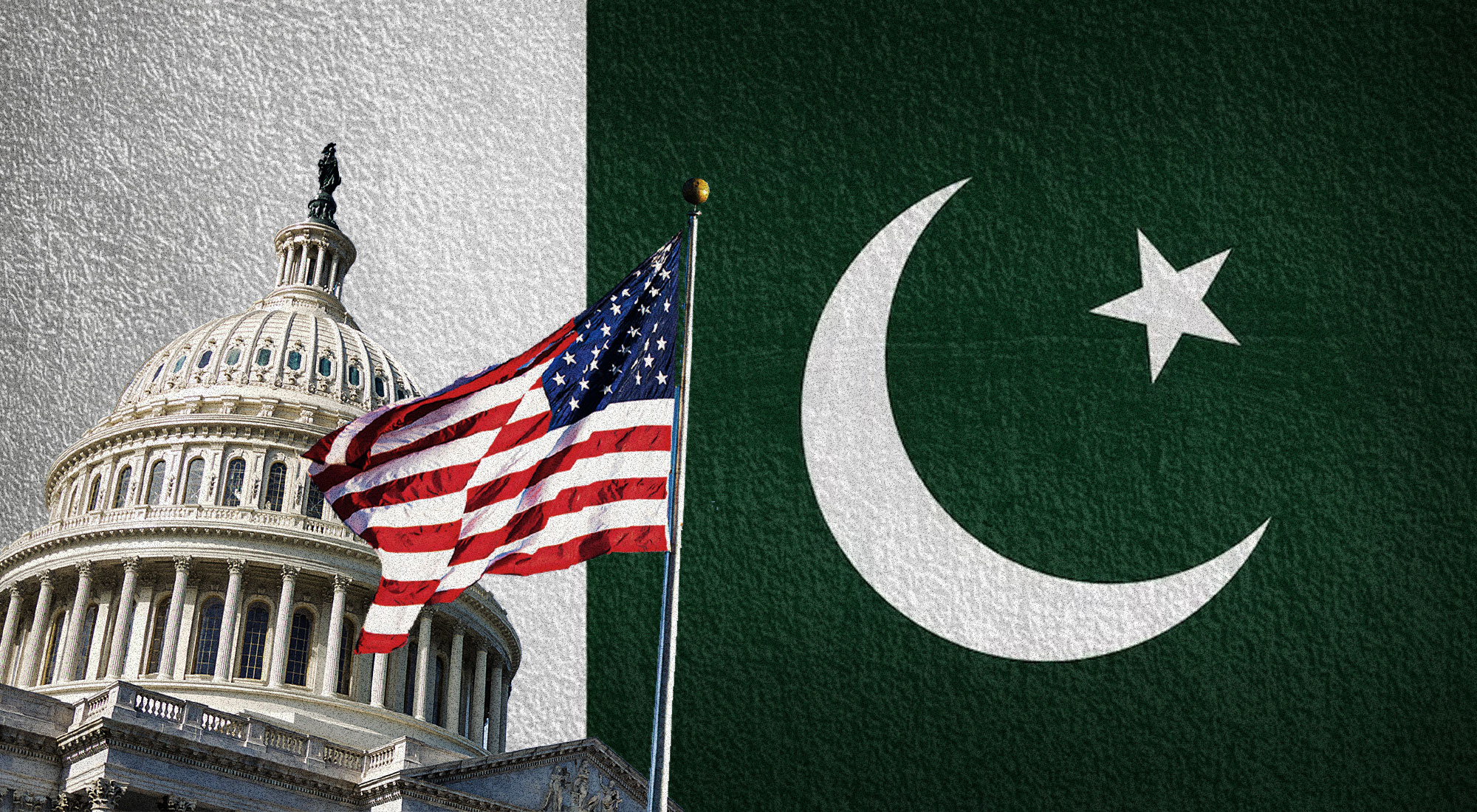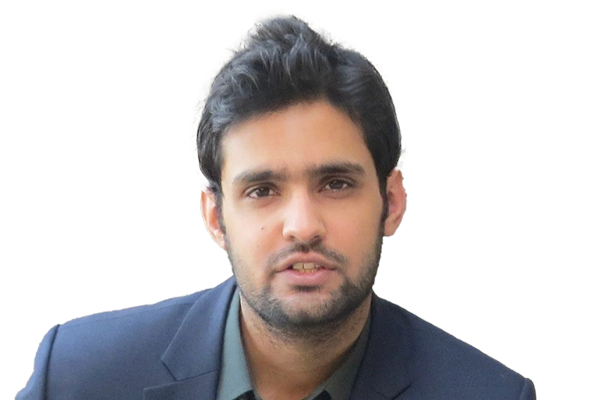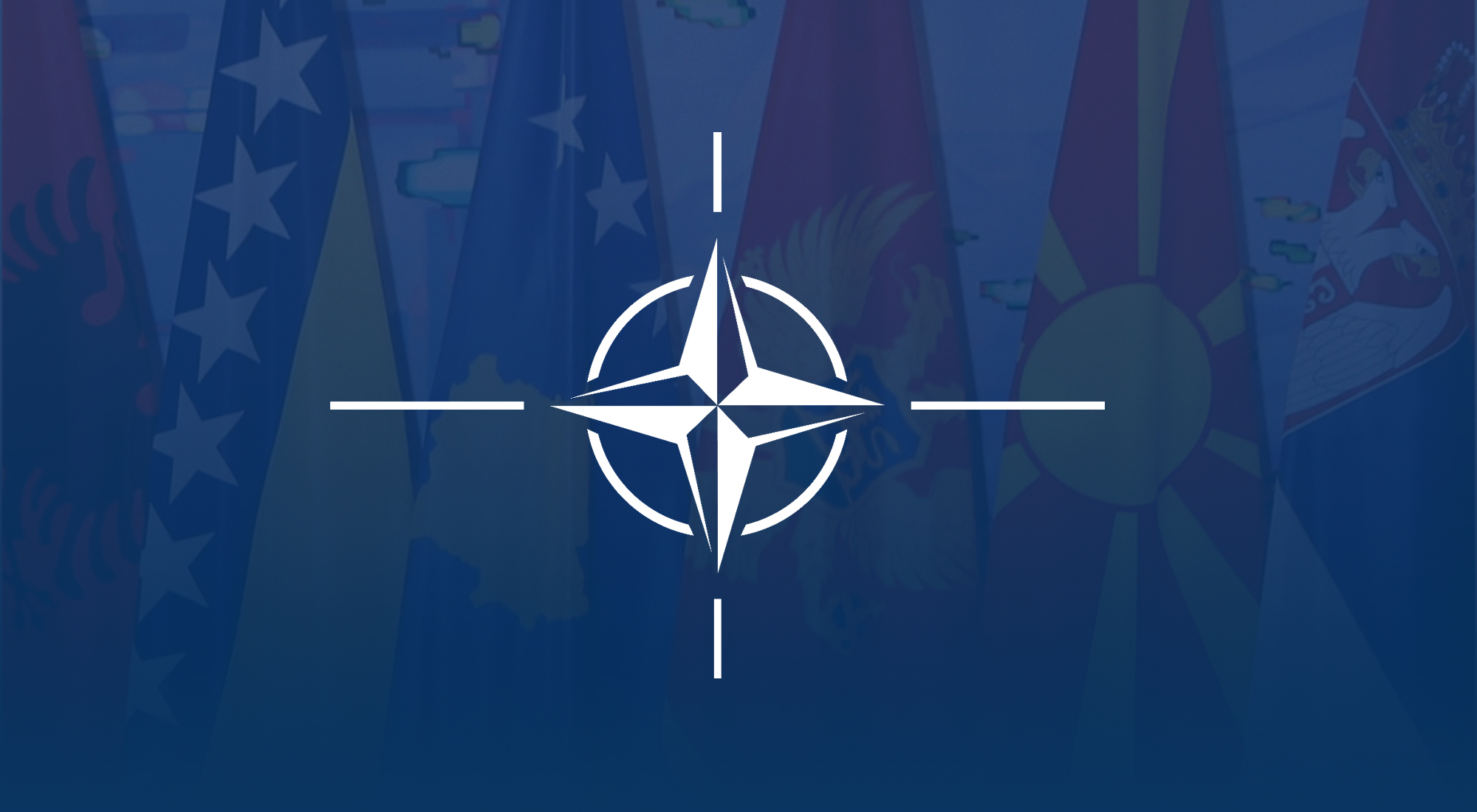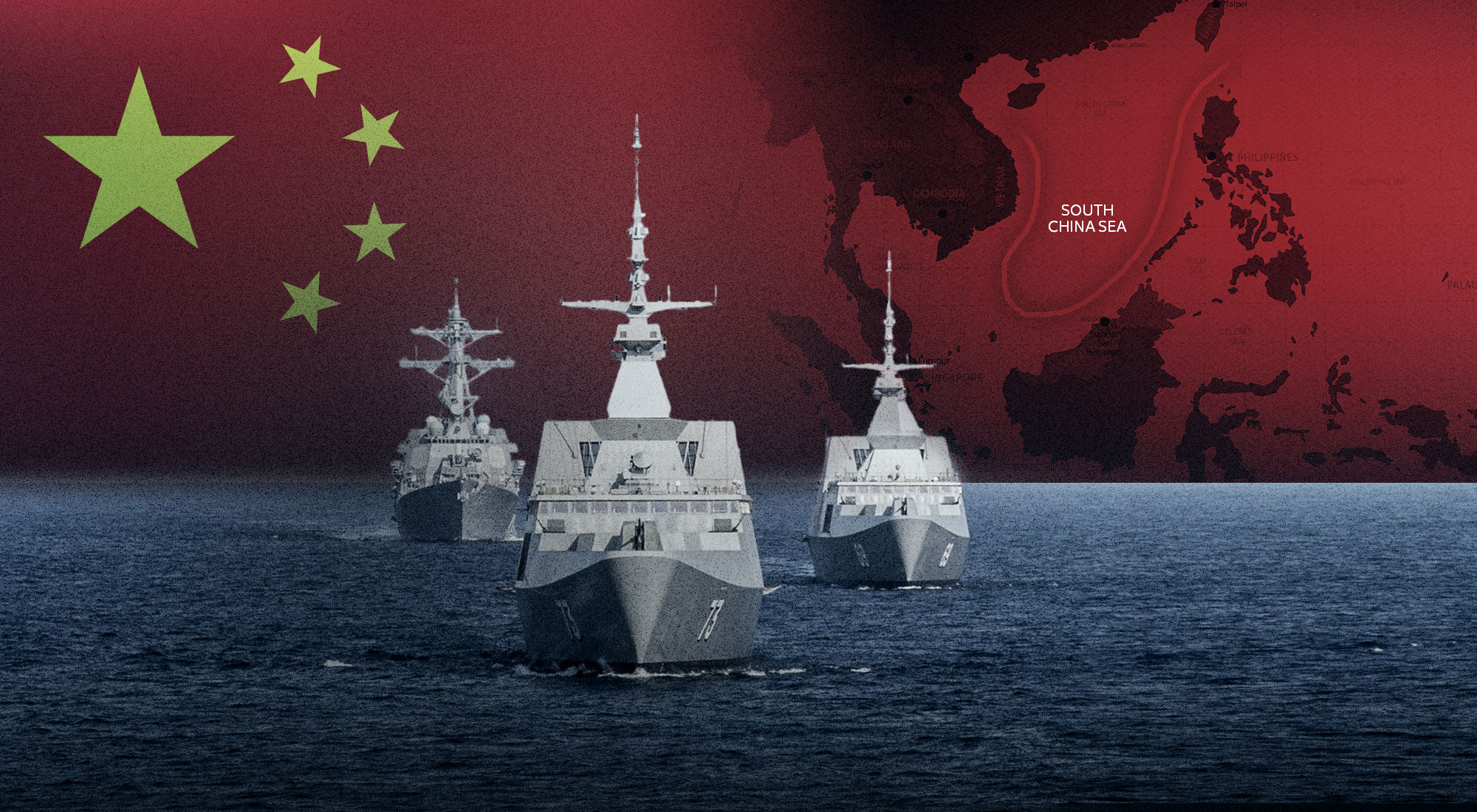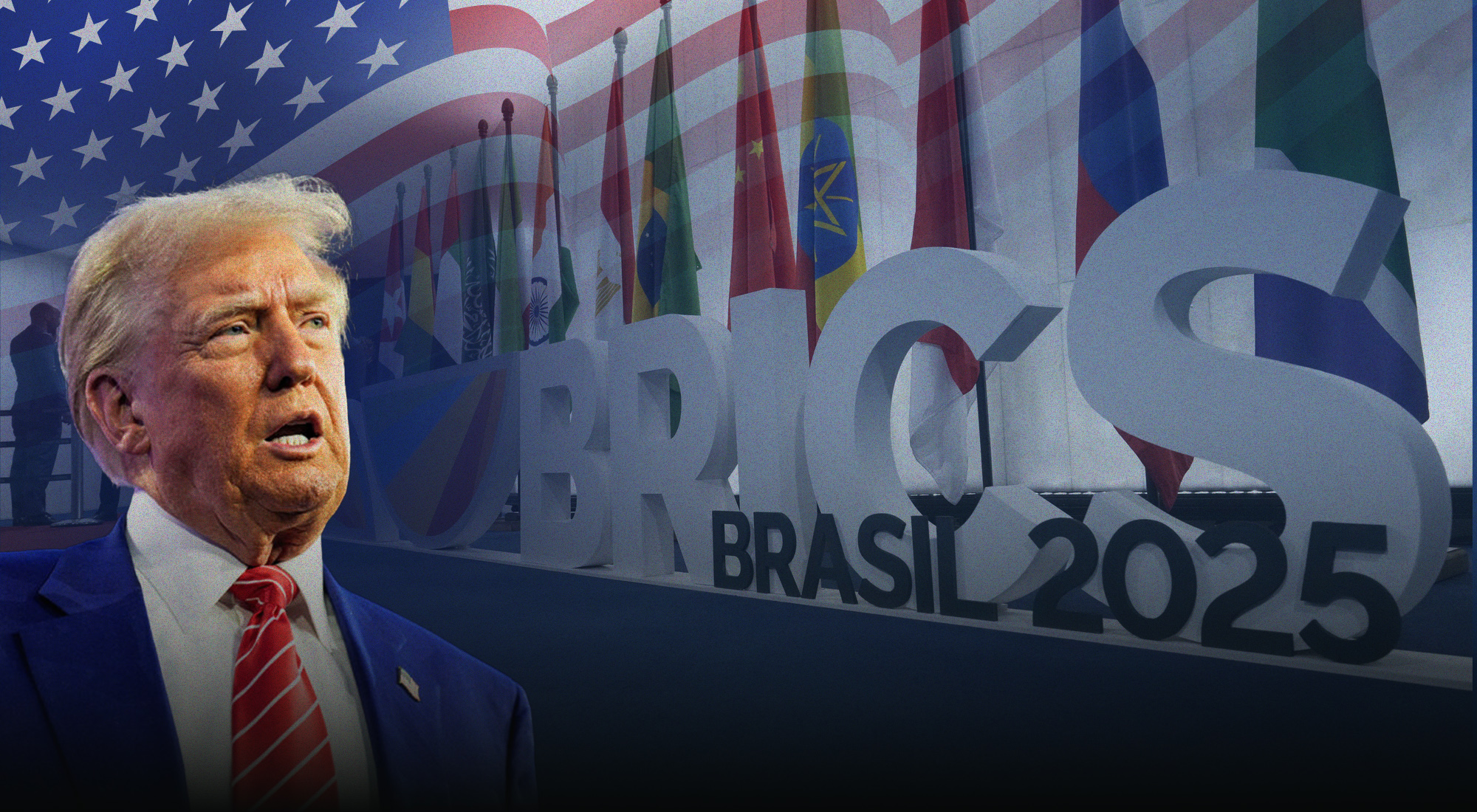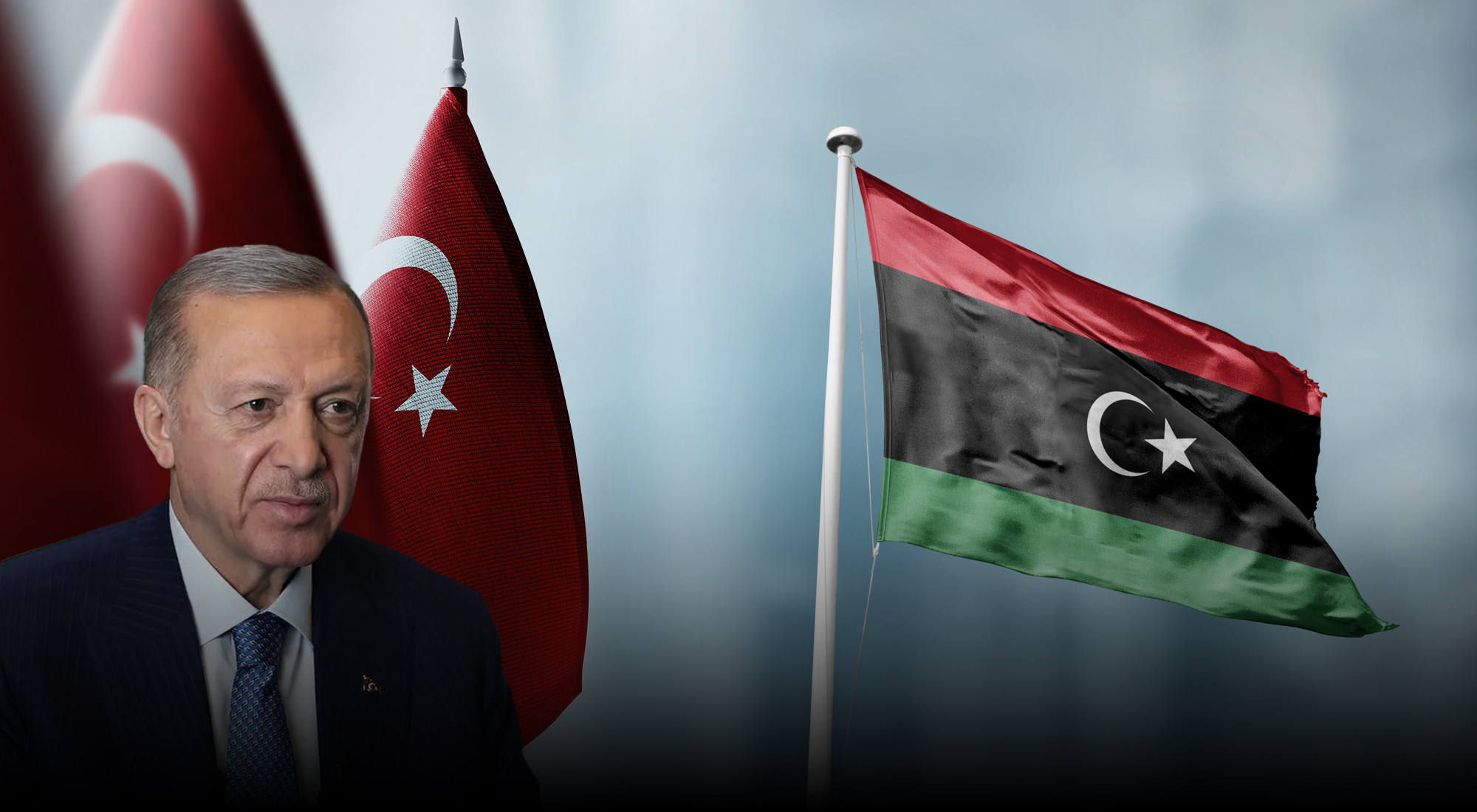Throughout history, U.S.-Pakistan relations have remained in flux. The relationship has seen its high points of cooperation and seen its lows. Washington’s multidecade counterterrorism engagement in Afghanistan was a high point for U.S.-Pakistan cooperation, marked by Pakistan’s status as a frontline U.S. ally and delicate peacebuilding that facilitated Washington’s 2021 military withdrawal.[1] In contrast, U.S. President Joe Biden’s refusal to entertain high-level diplomatic engagement with Islamabad marked a low point for time-tested relations.
Despite these changes, there has been an acknowledgment over the years that Washington cannot afford to completely overlook the utility of its relationship with Pakistan. Targeted counterterrorism cooperation is an illustrative case. Pakistan’s recent support in securing the arrest of Mohammad Sharifullah, whom the U.S. holds responsible for a 2021 attack on American troops at Kabul airport, demonstrates Pakistan’s value to high-profile intelligence-based operations at present.
From the U.S. perspective, nuclear apprehensions are another pull factor. It sees continued political and economic instability in Pakistan, a nuclear-armed state, as untenable for regional security in South Asia. This view is grounded in broader U.S. threat perceptions during the 1980s and 1990s. U.S. intelligence suspected that a conventional war between India and Pakistan could take on a nuclear dimension through a “miscalculation or irrational response.”[2] Today, if such a worst-case scenario came to pass, it could prompt the Trump administration to exercise delicate peace-building and conflict mitigation in a region that is now subordinate to U.S. strategic priorities in the Indo-Pacific.
Now as Pakistan’s strategic relevance faces new limits under the Trump administration, there is a dire need to manage expectations and explore emerging opportunities for cooperation. These considerations are central to effectively managing the U.S.-Pakistan relationship in the near future.
New limitations
With President Donald Trump proceeding with his second term in office, there are a series of limitations on the U.S.-Pakistan relationship.
First, climate change is unlikely to help diversify the relationship away from its security-centric focus. President Trump does not share his predecessor’s affinity for climate financing, has withdrawn the U.S. from the Paris climate agreement, and is in the process of pausing climate spending across the government. These measures threaten to understate the former U.S. administration’s strategic investments in Pakistan’s renewables, water management, and smart agriculture sectors, and past U.S. intent to improve bilateral relations on the back of climate change. The Trump administration’s “America First” approach puts a premium on negating climate change as a pressing global challenge and is increasingly opposed to broader diversity, equity, and inclusion (DEI) funding as well. Together, these measures limit optimism for any climate-focused diplomatic reset for Pakistan and raise possibilities of an enduring trust deficit.
The Trump administration’s increasingly antagonistic approach to China’s trade, economic, and diplomatic interests also adds to Pakistan’s strategic relevance dilemma. Beijing’s economic assistance played a pivotal role in helping Islamabad secure its 22nd agreement with the International Monetary Fund (IMF) in September last year.[3] The agreement was key to helping Pakistan replenish its dangerously low foreign exchange levels and prevent the worsening of a severe economic crisis. Given that engagement with bilateral creditors plays a key role in securing Pakistan’s IMF loans, U.S. threat perceptions of China could complicate Islamabad’s future loan negotiations. After all, the U.S. enjoys the largest share of votes (at just over 16 percent) within the IMF, affording the Trump administration significant leverage to influence the institution’s decision-making process. However, prospects of exercising that influence to Pakistan’s advantage remain bleak. The Trump administration has already suspended US$845 million in multisector funding and has a history of threatening Pakistan to “do more” to avail U.S. goodwill.[4]
Though counterterrorism cooperation remains a fixture in U.S.-Pakistan ties, it is unclear exactly how expansive current engagement could get. Sharifullah’s arrest was not an isolated incident: it was the result of a multiagency effort that included the Central Intelligence Agency (CIA), the Federal Bureau of Investigation (FBI) and Pakistan’s Inter-Services Intelligence (ISI).[5] The mission effectively captures Pakistan’s utility to transnational terrorist targets, including those belonging to the Islamic State – Khorasan Province (ISIS-KP).
Still, the Trump administration is unlikely to favor a drastic expansion in targeted counterterrorism cooperation. Critical aid to promote such expansion has waned over the years, and Trump shows no signs of pressuring the Afghan Taliban to rein in anti-Pakistan terror groups sheltering on its soil.[6] This includes the banned Tehreek-e-Taliban Pakistan (TTP), which carried out over 600 attacks against Pakistan last year and set up training facilities in at least four Afghan provinces.[7] Meaningful U.S. pressure on the Afghan Taliban, whose members have been recruited by the TTP, is thus a central consideration for Pakistan in any expansive security partnership. Pakistan has good reason to argue its case: the 2021 U.S. military withdrawal from Afghanistan contributed to a surge in cross-border terrorism and strengthened the TTP’s hand against the Pakistani state. Findings from the UN Analytical Support and Sanctions Monitoring Team also show that the Afghan Taliban, years after the U.S. withdrawal, remains a source of logistical and financial support for the TTP.
There is a growing understanding within the Trump administration that security engagement is best served as transactional, signaling an outsized focus on accommodating U.S. interests. An outsized preference for American interests became evident in March 2025, when Adam Boehler, the special presidential envoy for hostage affairs, and Zalmay Khalilzad, a former top U.S. ambassador to Afghanistan, made a surprise visit to Kabul, the first by U.S. officials in years.[8] The move was in line with Trump’s broader push to secure the return of American captives in Afghanistan, recover U.S.-manufactured military equipment, and possibly enlist the support of countries beyond Pakistan to address Washington’s specific transnational terrorism concerns. These interests run counter to Pakistan’s expectations for a broad-based security partnership, where targeting of anti-state groups is seen as a mutual imperative.
Advancement of U.S.-India strategic ties is another limiting factor for Pakistan. Washington is heavily invested in scaling up the bilateral trade volume to US$500 billion by 2030, and New Delhi has its eyes set on a multi-sector Bilateral Trade Agreement (BTA).[9] Heightened defense cooperation, foreign direct investment stakes, and India’s perceived role in tempering Chinese influence in the Indo-Pacific, all remain highly relevant priorities for the Trump administration. The diplomatic, financial, and technological capital focused on an expanding India-U.S. partnership could make it difficult for Washington to exercise stronger diplomatic outreach toward Pakistan, New Delhi’s arch-rival.
Incentives appear minimal, given Trump’s relatively non-interventionist foreign policy approach. New Delhi also has a history of disapproving of U.S. outreach in South Asia that it deems excessive or counterproductive to U.S.-India relations. 2008 is a proof point: India expressed strong reservations over a possible U.S. special envoy focused on Kashmir, the hotly contested dispute with Pakistan, and ensured that the U.S. catered to Indian sensitivities toward Islamabad.[10] Washington’s space to maneuver between India and Pakistan appears further constrained after a terrorist attack on tourists in Indian-controlled Kashmir drove India-Pakistan relations to one of their lowest points in April 2025, testing the limits of any U.S. balancing act as fears of a conflict loom large.
Motivations for navigating constraints
Despite strategic constraints, both the U.S. and Pakistan have ample incentives to refocus their relationship on areas of mutual gain.
Pakistan’s critical mineral potential could serve as a major point of convergence. Abundant reserves ranging from copper and lithium to rare earth elements (REE) can power Washington’s future technology and industrial needs, while products spanning defense equipment and sophisticated electronics require sustained critical mineral supplies from a diverse range of sources.[11]
For Pakistan, U.S. mineral investments, technological “know-how,” and long-term infrastructure support could provide an opening to monetize its US$6 trillion minerals industry and expand its contribution to the country’s GDP. Presently that contribution stands at about three percent, though mining has the potential to generate over US$74 billion in free cash flows over the next 37 years.[12] The geographical expanse of Pakistan’s mineral wealth also suggests ample resource extraction potential in the long run. Mineral-rich areas cover 600,000 square kilometers, and the presence of over 90 known minerals—with many yet to be mined on a commercial scale—underscores Pakistan’s promise to future supply chains with the requisite development and technical support.
For the United States, reorienting U.S.-Pakistan cooperation toward critical minerals could help advance the current administration’s core objective: to secure “diverse and reliable sources” of these materials as a “strategic priority.” Moreover, in an April factsheet released by the White House, Washington characterized critical minerals as central to U.S. national security and economic stability, describing critical minerals and their derivative products as the “key building blocks” of America’s defense industrial base.[13]
The case for mutual dependency is increasingly clear. The U.S. is looking at a challenging demand forecast in the coming years, with critical mineral procurement needs expected to reach new highs. U.S. Department of Defense estimates confirm that each F-35 fighter jet already requires hundreds of pounds of rare earth materials. Increased uncertainty surrounding China’s future export control restrictions could also toss Washington’s high-tech industrial ambitions into limbo.
Therefore, investing energies in Pakistan’s largely unexplored and underdeveloped critical minerals sector could help Washington prepare against future supply chain constraints. Pakistan also provides a fallback option for material procurement in the event that U.S. mineral negotiations with the Democratic Republic of Congo (DRC) run into complications. The Trump administration is preparing the ground for an agreement that could offer U.S. security assistance to the DRC, in exchange for long-term U.S. access to its critical minerals.[14] But these efforts could face headwinds as armed groups exercise considerable command over mining areas, and questions surround the DRC’s ability to establish long-term control over its own territories. Despite a multidecade separatist insurgency active in Pakistan’s southwest Balochistan province, many of these constraints do not apply to the country, reinforcing its status as a viable critical minerals alternative for the United States.
Another factor favoring U.S.-Pakistan minerals cooperation is the Trump administration’s transactional approach to dealmaking: to minimize costs and maximize benefits. That approach could find a stronger fit in Pakistan, where China is already in the process of managing domestic unrest and violence in mineral-rich Balochistan. The southwestern Pakistani province is home to China’s flagship US$62 billion China-Pakistan Economic Corridor, a key component of Beijing’s Belt and Road Initiative (BRI). As security threats in the province take on a new intensity, China’s existing coordination with Pakistan’s civilian and military leadership could spare Washington the costs of managing separatist violence entirely off its own accord.[15]
Pakistan’s value proposition is also attractive and realistic in equal measure. It is attractive because Reko Diq, situated in Balochistan, is estimated to host copper resources in excess of 50 billion pounds, with gold deposits totaling 41 million ounces.[16] Collectively, these constitute one of the world’s largest copper-gold deposits. The mine is also expected to commence production in less than three years, providing a strategic opportunity for Washington to promote its mineral investment footprint and gain a competitive edge over other international lenders that are vying for financing.
At the same time, Pakistan’s critical minerals value proposition is realistic given the increased interest among U.S. policymakers. A U.S. Congressional delegation comprising Jack Bergman, Tom Suozzi and Jonathan Jackson visited Pakistan in April to strengthen consensus on mineral development, the first such visit in nearly two years. U.S. Secretary of State Marco Rubio has also flagged critical minerals as a key opening for future cooperation, offering a pulse of high-level support from within the administration.[17] That interest also took on a new intensity at the two-day “Pakistan Minerals Investment Forum,” where Eric Meyer, senior U.S. official for South and Central Asian Affairs, conveyed the administration’s optimism over a level playing field for investors.
Looking ahead, the U.S. should be mindful that the window for investment will not be open indefinitely. Chinese firms continue to strengthen business-to-business engagements in Pakistan’s mining sector, securing multisector deals, and contracts worth over US$435 million in April.[18] Both sides have also resolved to deepen their planning of mining industrial parks and share a consensus on increased skills training, processing and minerals development support. As Pakistan extends its foreign investment pitch to Saudi Arabia, the United Kingdom, Türkiye, Russia and Finland, the onus is on the Trump administration to fast-track its prospective mineral investments in Pakistan. This could allow Washington to win more confidence of Pakistani policymakers and businesses and strengthen its credibility as a reliable investor and mineral exploration partner for the long term.
Ever since Washington’s withdrawal from Afghanistan, the U.S.-Pakistan relationship has struggled to maintain deep relevance based on its own merits. On the one hand, Washington refuses to view the relationship in conjunction with its deepening strategic relationship with India, Pakistan’s main rival. On the other hand, Pakistan is keen to resist any U.S. pressure that prompts a deviation in its robust military and economic ties with China, Washington’s principal rival on the world stage.[19] The Kabul factor also appears to have fulfilled its usefulness: the rise in cross-border terror attacks no longer warrants the same degree of U.S. attention, support, and action as witnessed during almost two decades of U.S. occupation of Afghanistan.[20] Thus, critical minerals—centered on Pakistan’s homegrown potential and driven by Washington’s future strategic needs—could successfully reinforce the U.S.-Pakistan relationship on its own merits, regardless of how foreign relations evolve in South Asia.
The Trump administration’s reciprocal tariffs could also prove advantageous to Pakistan. In early April 2025, Washington imposed a 29 percent reciprocal tariff on imports from Pakistan, prompting fears of over US$1 billion in annual losses and a double-digit decline in Pakistani exports.[21] But these apprehensions overlook the broader policy steps that Pakistan could take to facilitate its own economic interests.
First, Pakistan could revise tariffs on specific raw materials that are essential to its industrial production. These include yarn, fabrics, metal products and processing materials, many of which are critical to scaling up future textile exports to the U.S.[22] These targeted tariff revisions could be seen as important concessions by the Trump administration. One of the fundamental goals of Washington’s reciprocal tariffs was to bring target countries to the negotiating table. By offering tariff concessions on strategic U.S. import materials, Islamabad can create incentives for multistakeholder U.S.-Pakistan trade discussions. A differentiated approach to tariff concessions could increase the possibilities of reduced U.S. levies on Pakistan and supplement ongoing efforts to increase U.S. imports. These could be seen as confidence-building measures to limit non-tariff barriers and balance out future trade.
On the other hand, revised tariffs could demonstrate government sensitivity to Pakistan’s top export industries, chiefly textiles. The textile industry, which makes up 77 percent of Pakistan’s total exports to the U.S. and is a backbone of the national economy, depends on U.S. raw material imports to advance future production. Greater tariff flexibility on U.S. imports therefore could limit prospects of widespread disruption to Pakistan’s economy, given that the textile industry contributes 8.5 percent to Pakistan’s GDP and is a top source of employment. Pakistan also faces a much lower reciprocal tariff rate compared to China, Bangladesh (at 39 percent) and Vietnam (at 46 percent), three key textile competitors in the U.S. market.[23] As heavy levies threaten to spike textile demand further within the U.S., Pakistan’s competitively priced exports could serve as attractive alternatives to domestic consumers, raising prospects of expanding its market share.
The tariffs can also guide Pakistan’s options on long-sought economic diversification. Overreliance on textiles—rather than a diverse set of sectors—leaves Pakistan’s exports vulnerable to fluctuating demand in the market and risks long-term export stability and revenue from the U.S. Given the worst-case scenario of a U.S. tariff spike in the future, Pakistan needs an effective risk management strategy to remain competitive in the U.S. market, the top single-country destination for its exports.
Islamabad can proceed by expanding its export basket to include the plastic, food, and medical equipment sectors. Some of these sectors have shown strong growth potential and are subject to marginal tariff increases when compared to Pakistan’s regional competitors. For instance, Pakistan’s surgical and medical equipment industry is valued at over US$600 million and is anticipated to grow by over 8 percent in the next five years.[24] Prioritization of these industries would thus play to Pakistan’s domestic strengths and help prepare against any sharp drop in U.S. demand for major export items, chiefly textiles.
Conclusion
Thus, the U.S.-Pakistan relationship can navigate a tense history of controversial counterterrorism cooperation by entertaining new avenues of convergence. Washington’s deep interest in diverse critical mineral sources forms a promising match with Pakistan’s multitrillion-dollar mineral economy and can help position the relationship on bilateral interests—as opposed to threat perceptions of China and India. Increased interest from U.S. policymakers and the strategic significance of mineral demands worldwide signal a potential win-win for Pakistan and the United States, and early support from policymakers suggests this trajectory could be built upon.
Pakistan could also use the Trump administration’s reciprocal tariffs to advance economic diversification and pursue tariff revisions on U.S. imports to win potential concessions with Washington. These steps should constitute a broader risk management strategy for Pakistan, which still faces the challenge of exporting market-competitive products to the U.S. amid heightened trade uncertainty.
The “China” factor in Pakistan-U.S. relations could also take on a more practical meaning for the Trump administration. Beijing’s existing coordination with Pakistan on separatist violence in Balochistan and its foothold in minerals development could make it easier for the Trump administration to pursue mineral cooperation without any complex domestic entanglement.
[1] Madiha Afzal, “The New, and Low, Normal in U.S.-Pakistan Relations,” Lawfare, January 2025, https://www.lawfaremedia.org/article/the-new–and-low–normal-in-u.s.-pakistan-relations.
[2] “U.S. Intelligence on South Asian Conflict Scenarios,” National Security Archive, April 22, 2025, https://nsarchive.gwu.edu/briefing-book/india-and-pakistan-intelligence-nuclear-vault/2025-04-22/us-intelligence-south-asian.
[3] “Pakistan’s deepening relations with China,” IISS, November 2024, https://www.iiss.org/sv/publications/strategic-comments/2024/11/pakistans-deepening-relations-with-china/.
[4] “US suspends $845m aid projects in Pakistan following Trump’s directive,” Profit, February 4, 2025, https://profit.pakistantoday.com.pk/2025/02/04/us-suspends-845m-aid-projects-in-pakistan-following-trumps-directive/.
[5] “Behind the scenes: Pakistan detained alleged plotter of Abbey Gate bombing based on CIA intel,” Axios, March 4, 2025, https://www.axios.com/2025/03/05/afghanistan-bombing-plotter-detained-pakistan.
[6] Fizza Abbas, “What the US Aid Suspension Means for Pakistan,” The Diplomat, February 13, 2025, https://thediplomat.com/2025/02/what-the-us-aid-suspension-means-for-pakistan/.
[7] Baqir Sajjad Syed, “TTP still gets financial, logistic support from Afghan Taliban,” DAWN, February 15, 2025, https://www.dawn.com/news/1892006.
[8] “Trump’s New Approach to the Taliban,” Foreign Policy, March 26, 2025, https://foreignpolicy.com/2025/03/26/trump-approach-united-states-taliban-afghanistan/.
[9] “Modi says US and India target $500 billion bilateral trade by 2030,” Reuters, February 14, 2025, https://www.reuters.com/world/india/modi-says-us-india-target-500-billion-bilateral-trade-by-2030-2025-02-13/.
[10] Arun K. Singh, “India-U.S. Relations Beyond the Modi-Biden Dynamic,” Carnegie India, September 2024, https://carnegieendowment.org/posts/2024/09/india-us-relations-beyond-the-modi-biden-dynamic?lang=en.
[11] “US can tap into Pakistan’s critical mineral riches,” The Express Tribune, March 5, 2025, https://tribune.com.pk/story/2532288/us-can-tap-into-pakistans-critical-mineral-riches.
[12] “Pakistan seeks investments to unlock vast potential of its mineral wealth,” Channel News Asia, April 14, 2025, https://www.channelnewsasia.com/world/pakistan-critical-minerals-investment-potential-gross-domestic-product-security-5064436.
[13] “Fact Sheet: President Donald J. Trump Ensures National Security and Economic Resilience Through Section 232 Actions on Processed Critical Minerals and Derivative Products,” White House, April 15, 2025, https://www.whitehouse.gov/fact-sheets/2025/04/fact-sheet-president-donald-j-trump-ensures-national-security-and-economic-resilience-through-section-232-actions-on-processed-critical-minerals-and-derivative-products/.
[14] Clarkson Kamurai, Brad Handler, and Morgan Bazilian, “Illicit mineral supply chains fuel the DRC’s M23 insurgency,” Atlantic Council, April 23, 2025, https://www.atlanticcouncil.org/blogs/energysource/illicit-mineral-supply-chains-fuel-the-drcs-m23-insurgency/.
[15] “China warns security threats to its nationals impede BRI investments in Pakistan,” Voice of America, October 30, 2024, https://www.voanews.com/a/china-warns-security-threats-to-its-nationals-impede-bri-investments-in-pakistan-/7845351.html.
[16] “Critical Minerals Add a New Dynamic to Pakistan-US Relations,” The Diplomat, April 16, 2025, https://thediplomat.com/2025/04/critical-minerals-add-a-new-dynamic-to-pakistan-us-relations/.
[17] Ibid.
[18] “HEMS 2025: Chinese delegation signs 37 deals worth $435 million in Lahore,” Associated Press of Pakistan, April 24, 2025, https://www.app.com.pk/global/hems-2025-chinese-delegation-signs-37-deals-worth-435-million-in-lahore/#google_vignette.
[19] “Pakistan’s deepening relations with China.”
[20] Madiha Afzal, “The New, and Low, Normal in U.S.-Pakistan Relations.”
[21] “Trump tariffs could pose ‘$1.4bn risk to Pakistan exports’,” DAWN, April 14, 2025, https://www.dawn.com/news/1904017.
[22] “An Analysis of U.S. Tariff Barriers Impacting Pakistan’s Trade,” Policy Research and Advisory Council KCCI, April 2025, https://prac.org.pk/uploads/An Analysis of U.S. Tariff Barriers Impacting Pakistan’s Trade.pdf.
[23] “Pakistan Sees Opportunity in Trump’s Tariffs,” The Diplomat, April 9, 2025. https://thediplomat.com/2025/04/pakistan-sees-opportunity-in-trumps-tariffs/.
[24] “Medical & surgical equipment industry: Pak, Chinese firms to boost ties,” The News, January 19, 2025. https://www.thenews.com.pk/print/1273800-medical-surgical-equipment-industry-pak-chinese-firms-to-boost-ties.



